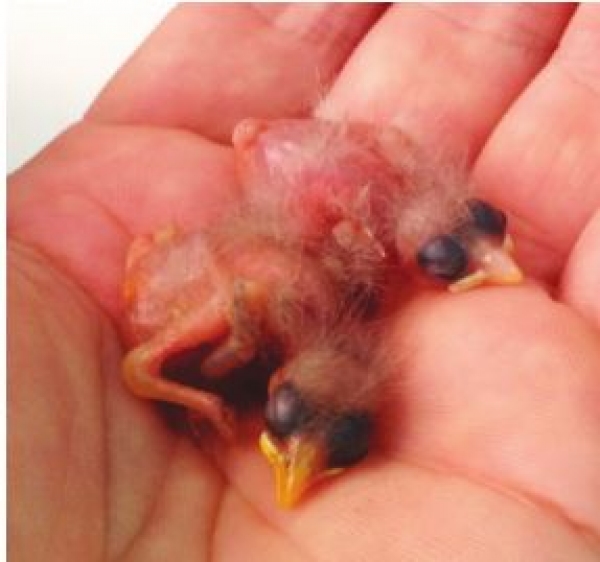
USING CAPTIVE BREEDING TO ENSURE FAMOUS DARWIN FINCH DOESN’T GO EXTINCT.
The Galapagos National Park teamed up with the San Diego Zoo Global to create a captive breeding program to save the critically endangered Mangrove finch. The Charles Darwin Foundation is also contributing to the recovery of the finch, which was made famous by Charles Darwin’s theory of evolution by natural selection. ect. The Mangrove finch population has dwindled to between 60 and 80 birds, existing on only 74 acres, earning the species a classification as critically endangered on the International Union for the Conservation of Nature’s Red List of Threatened Species. The finches are experiencing a high mortality rate in their hatchlings because a parasitic larvae that emerges from fly eggs feeds on the hatchlings.
The program team decided the best course of action was to rear the finches in captivity for the first time. They collected 21 eggs and three hatchlings to be artificially incubated and hand-fed 15 times a day. The program’s conservationists have hopes that this rearing effort and monitoring after release will provide this generation of finches a more viable future, according to San Diego Zoo Global’s press release.
“Each success is a result of great teamwork between the zoo and GNPD and represents a milestone for the recovery of the mangrove finch wild population,” Francesca Cunninghame, the Charles Darwin Foundation scientist responsible for the project, said in a San Diego Zoo Global press release. “The reintroduction of the youngsters back into the wild will be our next big challenge.”
NEW PERMAFROST AT ALASKA’S SHRINKING LAKES TEMPORARILY DECREASES DRAINAGE CONCERNS
New permafrost (frozen ground that lasts at least two consecutive years) that has formed around the edges of shrinking Alaskan lakes will improve their ability to retain water, but not for too much longer, according to research by the U.S. Geological Survey and McGill University in Montreal, Canada. The researcher’s model shows that, within seven decades, conditions created by global warming will not allow for the development of new permafrost.
“The system harbors a lot of lakes, which are very important in bird migration, but without permafrost there would not be nearly as many lakes or wetlands. As permafrost thaws as a whole, the system is going to become drier,” says Michelle Walvoord, a scientist from the US. Geological Survey who co-authored the study’s results, which appeared in the journal Geophysical Research Letter.
According to Walvoord, the prevailing theory behind the shrinking lakes is that, as the permafrost below the lake thaws, the drainage and outflow of water from the lake increases. The increase in plant diversity and complexity, as well as the increase in summer shading, has recently allowed for the development of the new permafrost, which could very well end the cycle of lake shrinking, Walvoord says.
In the future, however, global warming conditions will not allow for the development of new permafrost because these lakes are located in an area that is very temperature sensitive. Increasing ambient air temperature will cause subsurface temperatures to spike above the zero degree Celsius temperature the ground requires in order for permafrost to develop.
Respond: [email protected]














